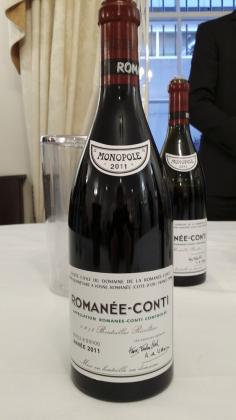A Fizz by Any Other Name
POSTED ON 13/12/2014To create a luxury product of fun, prestige and celebration from a wine that struggles in the vineyard to reach more than 11 per cent alcohol is the ultimate in vinous alchemy. Faced with the most magical name in wine, it is sometimes easy to forget that champagne has many different levels of quality and that a champagne by any other name might also taste as good.
Every Lidl Bit Helps
POSTED ON 06/12/2014I had to pinch myself when Lidl was crowned best value supermarket for wine last month. True, the 600-strong budget chain (in the UK alone) had made a big PR splash with its Premium French Wine Collection after selling 800,000 bottles in the autumn. As you’d expect, prices for the range of 48 bordeaux and other French classics that made up the lion’s share were noticeably higher than those of its core range of 60-odd wines.
The Italian Job
POSTED ON 22/11/2014If Gulliver were with us today, he would find few better places to observe the warring factions of the Big Enders and Little Enders than Italy. Having held out against screwcaps in favour of their beloved traditional corks, the Italians finally passed a law on 13 March this year permitting the use of any type of bottle seal for the top legal tier of DOC and DOCG wines. Here’s the catch: as long as there were no restrictions placed on specific closures by the regional consorzio.
Absolutely Cracking French Wines
POSTED ON 15/11/2014Following the success of Andrew Jefford’s seminal wine book The New France published in 2002, Sopexa, the organisation that looks after French wine in the UK, launched the Absolutely Cracking Wines from France tasting. Chosen this year by 41 journalists and 29 sommeliers, the selection has become an annual event and continues to grow. Compared to the 62 wines shown six years ago, there were a total of 176 wines in the categories of house wines under £10, hidden gems £10 - £16 and classics at £16 - £30+.
Investing in Wine. Is it Worth It?
POSTED ON 11/11/2014With the fine wine market peaking in 2011, Sir Alex Ferguson missed the right time by a couple of years but still did well for himself. Quitting while ahead after laying down wine since 1991, the former Manchester United manager netted a cool £2m on the sale of his so-called “star players”at Christie’s this year.
 Romanée-Conti
Romanée-Conti
Going Large
POSTED ON 08/11/2014Magnums are big, or so it seems. I can’t recall having seen quite such an impressive array of magnums in pre-Christmas tastings, or should that be such an array of impressive magnums. Size isn’t everything, apparently, but the sheer majesty of a magnum on the dinner table is a magnificent sight. Size also has its practical uses. The wine in a 1.5 cl bottle generally keeps better, so if you were thinking of laying the odd magnum down, champagne in particular is well-served by this tip. The only downsides I can think of are finding enough fridge space and, perish the thought, a corked magnum.
Everyday Icons
POSTED ON 01/11/2014On the face of it, an everyday icon wine is a paradox. How can a wine be an icon if it’s an everyday drink when everyday surely implies the opposite of the rarity that denotes icon status? There are many wines that aspire to icon status based on an indefinable je ne sais quoi, but few succeed. Those that do, among them Château Lafite, Domaine de la Romanée-Conti and Petrus, have crossed the affordable rubicon into la-la-land.
Sweet as a Bunch
POSTED ON 18/10/2014Recognising that most wine drinkers buy their wines in supermarkets, this column doesn’t indulge in gratuitous supermarket-bashing. Nonetheless, with a collection of wines based on new additions to their ranges. The Bunch, representing six of the country’s most established independent wine merchants, showed that they, and many other independents, have a consistent nose in front of the supermarket pack when it comes to exploring new territory, on quality, and occasionally even on value. So let the Pandora’s box open.
Riesling Renaissance: Location, Location, Location
POSTED ON 11/10/2014Is there any greater food-friendly white wine in the world that’s appreciated less than dry German riesling? The time-honoured prejudices are a rollcall of shame: the bland legacy of liebfraumilch, the non-rieslings of laski and olasz riesling, the complexities of German labelling, the battery acid wines of yesteryear and the archaic view of German riesling as granny’s favourite sweet wine.
Sake with your Oyster, your Burger and your Stilton, sir?
POSTED ON 04/10/2014Philip Harper, Japan’s only British sake master brewer, came to London last month to conduct a tasting of his Tamagawa sake with British cheeses from Paxton & Whitfield: a Shepton Mallet goat’s, Paxton’s aged cheddar and Half Baby Stilton. Tousled and Dylan-esque, Philip is an iconoclast. In his talk he defied two conventions. First he demonstrated that sake’s umami content (the fifth taste, meaning, basically, savoury), makes it a good match for cheese.

